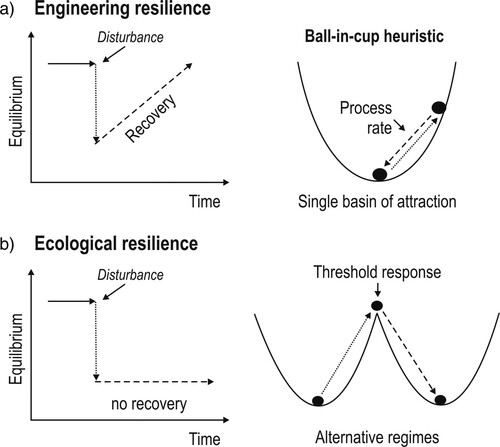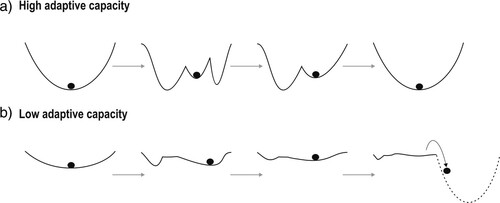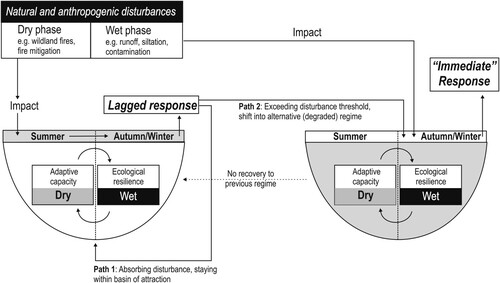Figures & data
Figure 1. Schematics contrasting (a) engineering resilience (recovery) with (b) ecological resilience. Engineering resilience is a process rate within a single basin of attraction. Ecological resilience invokes alternative regimes and threshold responses leading to emergent phenomena.

Figure 2. Schematics of (a) high and (b) low adaptive capacity. Shown are temporal snapshots of changing basins of attraction over time (sequence of gray arrows) in response to disturbances. High adaptive capacity facilitates engineering resilience; low adaptive capacity is conducive to regime shifts.

Table 1. Factors contributing to adaptive capacity within and across levels of biological organization. This table is meant to show the complexity of factors mediating adaptive capacity and is therefore not exhaustive. Modified from Angeler et al. (Citation2019).
Figure 3. Conceptual model of adaptive capacity and ecological resilience in temporary wetlands emphasizing alternative regimes (white and gray basins of attraction) in which dry and wet phases alternate as part of the natural disturbance regime. Note that the association made with seasons is an overgeneralization made to support the case study (see text). The model associates the latent potential of adaptive capacity and the expression of this potential in the form of ecological resilience in the dry and wet phases, respectively. The model also emphasizes disturbances during dry and wet periods that can lead to different impact–ecological response patterns (Path 1, Path 2). Note: these impact–response patterns have been showcased for one regime in the model for simplicity, but they apply similarly for both regimes.

